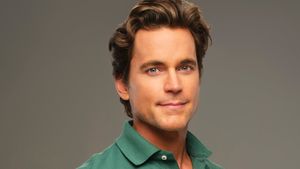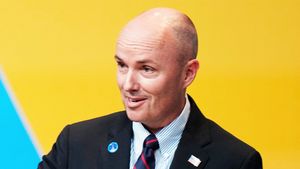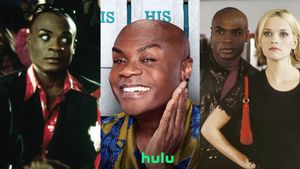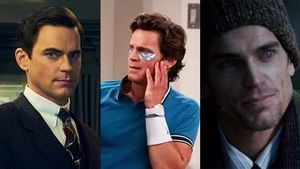
Treatment GuideJust DiagnosedSex & DatingAfrican AmericanStigmaAsk the HIV DocPrEP En EspañolNewsVoicesPrint IssueVideoOut 100
CONTACTCAREER OPPORTUNITIESADVERTISE WITH USPRIVACY POLICYPRIVACY PREFERENCESTERMS OF USELEGAL NOTICE
© 2025 Pride Publishing Inc.
All Rights reserved
All Rights reserved
Scroll To Top
By continuing to use our site, you agree to our Private Policy and Terms of Use.
A hidden sanctuary lies at the eastern end of San Francisco's Golden Gate Park, where 71/2 acres of meandering paths and sloping hills lead to a secluded meadow. Surrounded by pine, redwood, Monterey cypress, and maple trees, this bucolic plot holds an almost mythic, otherworldly power in the minds and hearts of the people who love and care for the space. Twenty years ago it was a largely forgotten mass of dilapidated dirt and brush, known as the deLaveaga Dell, that the city could not afford to maintain. Then a group of volunteers, looking for a place to channel their grief over the AIDS crisis that was so devastating their community, raised private funds, rolled up their sleeves, and turned the land into a memorial to those lost to the disease. With Rep. Nancy Pelosi as its champion in Congress, the National AIDS Memorial Grove, as it is now known, was recognized as a national memorial in 1996, one of only two in California.
WATCH THE TRAILER TO FORGET ME NOT:
In an upcoming documentary about the National AIDS Memorial Grove, Pelosi reflects on how from the passion and commitment of these trailblazers "there emerged this magnificent grove. And then we had this work of nature that really resulted from the grief and sadness of many, converted into a beautiful memorial of remembrance and renewal."
Directed by Emmy-nominated filmmaker Andy Abrahams Wilson, Forget Me Not hopes to bring the national attention that is due to a memorial of the AIDS Grove's stature. Wilson's film, which is nearing completion as he seeks additional funding, will trace the memorial's nascent years to its present, chronicling the stories of those whose lives cross paths in the park: friends, family, and loved ones of those who have died; people infected and affected alike by HIV.
Wilson, who was himself unaware of the AIDS Grove before the memorial's organizers approached him about creating the film, is enthralled by a place he said provides a poignant, Buddhist-like reflection on life, loss, and ultimate regeneration through nature. The AIDS Grove's upkeep, he points out, largely falls to a group of volunteers who get their hands dirty and find solace through tending the earth and ultimately watching beautiful things grow. Their personal involvement with the space, he says, is unique and sets the site apart from the impassive stone of the Vietnam Veterans Memorial, Mount Rushmore, or Grant's Tomb.
"When we see that process in nature, we see the death," says Wilson, "and we see the regeneration. It's a healing. It's a coming full circle."
"I've been scarred by AIDS, and I'm a survivor," he continues, telling of having lost many friends and a former lover when living in San Francisco in the early 1990s. "The AIDS Grove is also a place for me."
"The film, while it discusses how to memorialize AIDS-it's also a discussion about memorial in general," he explains. Our current political climate, he adds, begs for a national dialogue about how we cope with death: "I call it a post-AIDS AIDS film. In a time of loss, what do we do with our grief? That's pertinent right now, with the war, with the memorial at Ground Zero. We've gone through this period of crisis. So this is a way of really finding healing."
From our Sponsors
Most Popular
Lexi Love comes out as HIV+ after Trump deletes federal resources
January 23 2025 11:23 AM
Ricky Martin delivers showstopping performance for 2024 World AIDS Day
December 05 2024 12:08 PM
Meet our Health Hero of the Year, Armonté Butler
October 21 2024 12:53 PM
This long-term HIV survivor says testosterone therapy helped save his life.
December 16 2024 8:00 PM
California confirms first case of even more deadly mpox strain
November 18 2024 3:02 PM
Trump's orders prompt CDC to erase HIV resources
January 31 2025 5:29 PM
Plus: Featured Video
Latest Stories
The Talk Season 5 premieres this spring with HIV guidance for the newly diagnosed
March 26 2025 1:00 PM
Discover the power of Wellness in your life
March 26 2025 12:41 PM
Season 4 of The Switch on resilience & radical self-love returns this spring
March 26 2025 12:20 PM
Jess King is here to help you live your happiest, healthiest life yet
March 24 2025 4:35 PM
BREAKING NEWS: Trump admin moves to end federal HIV prevention programs
March 18 2025 6:10 PM
Gerald Garth is keeping people of color happy and healthy through trying times
March 11 2025 3:38 PM
Celebrating Black History Month with our annual African American issue
February 01 2025 3:28 PM
Tyler TerMeer vows to continue to fight for health care for all
January 28 2025 3:00 PM
Plus nominated for 2025 GLAAD Media Award
January 22 2025 12:42 PM
A camp for HIV-positive kids is for sale. Here's why its founder is celebrating
January 02 2025 12:21 PM
'RuPaul's Drag Race' star Trinity K Bonet quietly comes out trans
December 15 2024 6:27 PM
AIDS Memorial Quilt displayed at White House for the first time
December 02 2024 1:21 PM
Decades of progress, uniting to fight HIV/AIDS
December 01 2024 12:30 PM
Hollywood must do better on HIV representation
December 01 2024 9:00 AM
Climate change is disrupting access to HIV treatment
November 25 2024 11:05 AM
Post-election blues? Some advice from mental health experts
November 08 2024 12:36 PM
Check out our 2024 year-end issue!
October 28 2024 2:08 PM
AIDS/LifeCycle is ending after more than 30 years
October 17 2024 12:40 PM
Twice-yearly injectable lenacapavir, an HIV-prevention drug, reduces risk by 96%
October 15 2024 5:03 PM
What Is a Side? Grindr's other sexual position option explained
October 14 2024 2:30 PM












































































